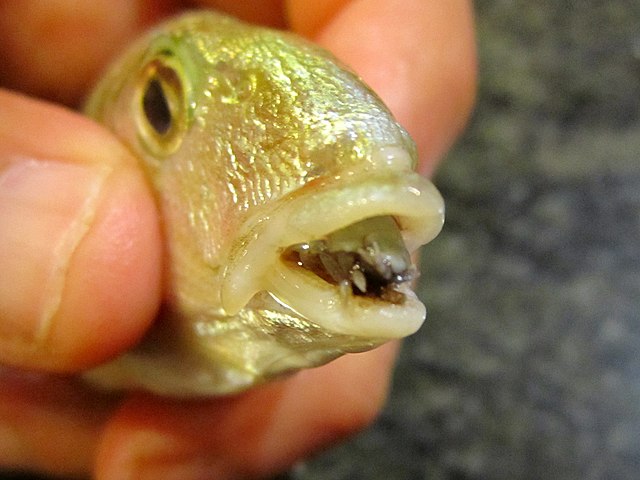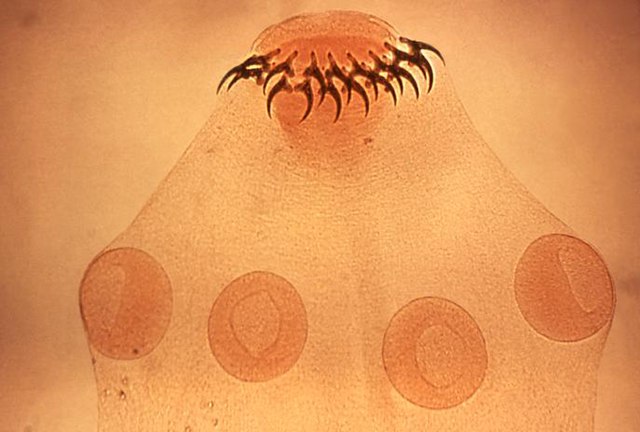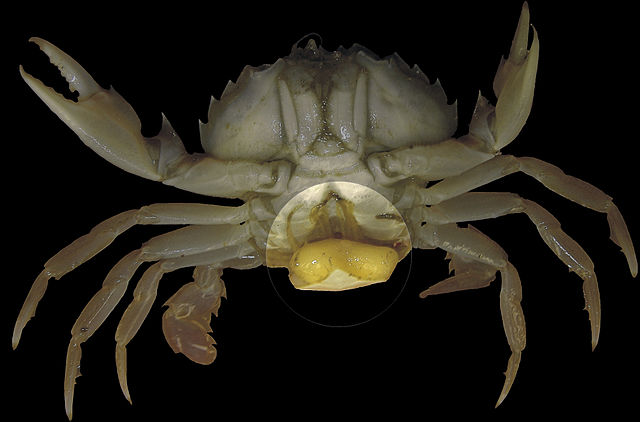In biology and medicine, a host is a larger organism that harbours a smaller organism; whether a parasitic, a mutualistic, or a commensalist guest (symbiont). The guest is typically provided with nourishment and shelter. Examples include animals playing host to parasitic worms, cells harbouring pathogenic (disease-causing) viruses, or a bean plant hosting mutualistic (helpful) nitrogen-fixing bacteria. More specifically in botany, a host plant supplies food resources to micropredators, which have an evolutionarily stable relationship with their hosts similar to ectoparasitism. The host range is the collection of hosts that an organism can use as a partner.
The black rat is a reservoir host for bubonic plague. The rat fleas that infest the rats are vectors for the disease.
Buff ermine moth caterpillar, a polyphagous micropredator
Mycorrhiza, a mutualistic interaction between a plant's roots and a fungus
Cleaning symbiosis: a Hawaiian cleaner wrasse with its client, a yellowtail wrasse
Parasitism is a close relationship between species, where one organism, the parasite, lives on or inside another organism, the host, causing it some harm, and is adapted structurally to this way of life. The entomologist E. O. Wilson characterised parasites as "predators that eat prey in units of less than one". Parasites include single-celled protozoans such as the agents of malaria, sleeping sickness, and amoebic dysentery; animals such as hookworms, lice, mosquitoes, and vampire bats; fungi such as honey fungus and the agents of ringworm; and plants such as mistletoe, dodder, and the broomrapes.
A fish parasite, the isopod Cymothoa exigua, replacing the tongue of a Lithognathus
Head (scolex) of tapeworm Taenia solium, an intestinal parasite, has hooks and suckers to attach to its host
The parasitic castrator Sacculina carcini (highlighted) attached to its crab host
Human head-lice are directly transmitted obligate ectoparasites








